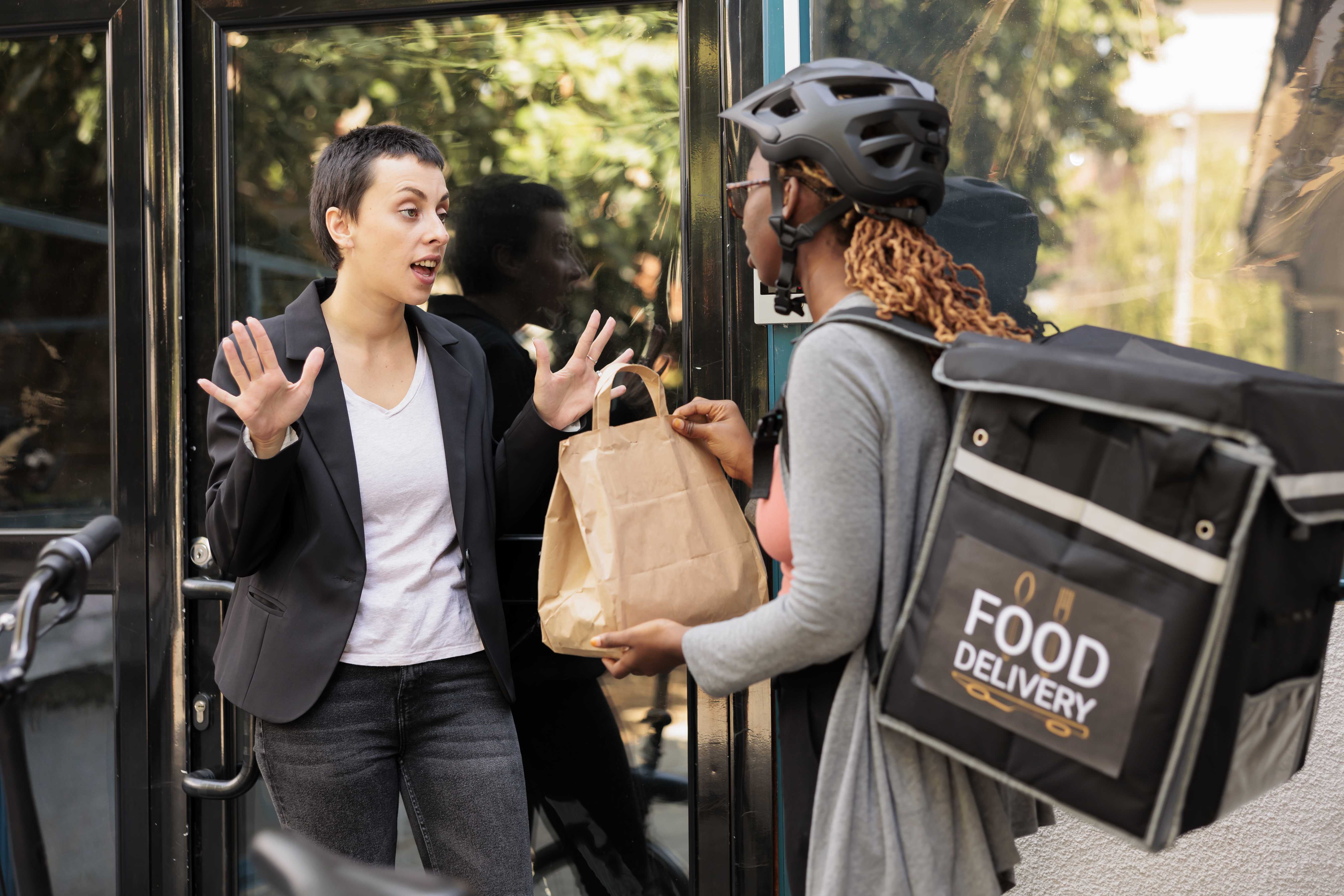Order errors can significantly impact customer satisfaction and erode trust in your business, potentially driving customers away to competitors. Ensuring accurate order fulfillment is crucial to maintaining customer loyalty and preventing potential consequences such as customer dissatisfaction and loss of trust.
According to a recent study, inaccurate orders as their top complaint about ordering food delivery. Beyond just losing a customer who received an inaccurate order, errors can result in negative online reviews and social media posts, which can harm a restaurant's reputation. In the digital age, customers have a powerful platform to share their experiences with a vast audience, and their negative feedback can quickly deter potential diners from choosing your restaurant for dining out or delivery. Therefore, ensuring accurate and timely delivery leads to increased customer satisfaction, loyalty, and positive reviews, which enhances the restaurant's reputation and attracts more customers.
This highlights the importance of identifying the reasons behind these errors and implementing best practices to prevent them and ensure accurate delivery. The subsequent sections of this post will examine the root causes of these errors and provide practical advice for preventing them.
The Root Causes of Order Errors in Delivery
Order errors in delivery can be a significant problem for restaurant owners, causing frustration for customers and damaging the restaurant's reputation.
- Manual Order Entry Errors - The causes of order errors can vary, but human error is a very common one. On average, human errors can cost around $30 per order, totaling $9,000 each month for a 20-table restaurant processing 6,000 orders monthly, with a 5% human error rate. Errors often occur by mistakes made when orders are manually re-keyed from a delivery tablet or when pickup orders are taken over the phone.
- Menu Errors - Another common source of errors is mismatches between a restaurant's internal POS menu and the digital menu its customers see on its online ordering and delivery platforms. According to Upserve, 86% of restaurant operators have encountered such a mismatch, which can lead to customer confusion and frustration.
- Inventory Errors - Poor inventory management is also a factor in order errors. A study by Toast found that 28% of restaurant staff attribute order mistakes to inventory management. Out-of-stock items can cause delays and customer dissatisfaction, particularly if the online menu is not updated to reflect the stock levels accurately.
- Delivery Errors - Delivery logistics can also lead to order errors, such as when a driver forgets part of an order, misplaces it, or is involved in an accident while delivering it. Delivery errors are widespread, with up to 30% of orders impacted by an error in the delivery process, according to McKinsey.
Preventing order errors in delivery is crucial to a restaurant's reputation and financial success. Identifying the root causes of these errors is the first step in developing effective strategies to prevent them.
How to Prevent Order Errors in Food Delivery
Here are some actionable steps that restaurant owners can take to prevent order errors in delivery:
- Keep your online menu descriptions and pricing up-to-date. Discrepancies on your digital menu lead to confusion and frustration for customers.
- Optimize order management and minimize errors with a POS integration partner like ItsaCheckmate. By automatically syncing orders into your POS, you eliminate the risk of errors that arise from manually re-entering orders from delivery tablets. Furthermore, menu changes made in your POS will seamlessly update across all online ordering and third-party delivery platforms, ensuring your menu is consistently up to date. Streamlining these processes helps maintain accuracy and efficiency, enhancing overall customer experience.
- Consider using chatbots or AI-powered customer service tools to make communication with customers more accessible and efficient. These tools can help avoid any misunderstandings that could lead to order errors, ultimately enhancing the customer experience.
- Double-check orders. Ensure that all orders are double-checked for accuracy before they are sent out to the kitchen or delivered to the customer. This can be done by having a designated staff member review the order before it is processed or by using a digital system that prompts staff members to confirm the accuracy of each order.
- Communicate with the customer. If there is ever any confusion or uncertainty about an order, it's important to proactively communicate with the customer to clarify any special requests or dietary restrictions. This can help to prevent mistakes and ensure that the customer's needs are met.
- Have ongoing training for staff members. Provide comprehensive training to all staff members on the importance of accuracy and customer service. This can include training on the ordering process, the use of technology, and communication skills. Regular training sessions can help to reinforce these skills and minimize the chances of errors.
By implementing these steps, restaurants can ensure accurate and timely deliveries, leading to improved customer satisfaction, increased loyalty, and a positive reputation for the restaurant.
Conclusion
Order errors can have a significant negative impact on a restaurant's reputation, leading to lost business and negative reviews. However, by addressing the root causes of these errors, restaurant owners can implement effective strategies to prevent them.
Digital ordering platforms and updated online menus can help reduce menu mismatches and improve customer satisfaction. Effective inventory management can prevent items from running out and leading to customer disappointment. Training staff and investing in a POS system can help reduce human error, while AI-powered customer service tools can improve communication and prevent misunderstandings.
By implementing these strategies, restaurants can improve the accuracy and timeliness of their deliveries, leading to increased customer satisfaction, loyalty, and positive reviews. This can ultimately result in increased business and growth for the restaurant.





